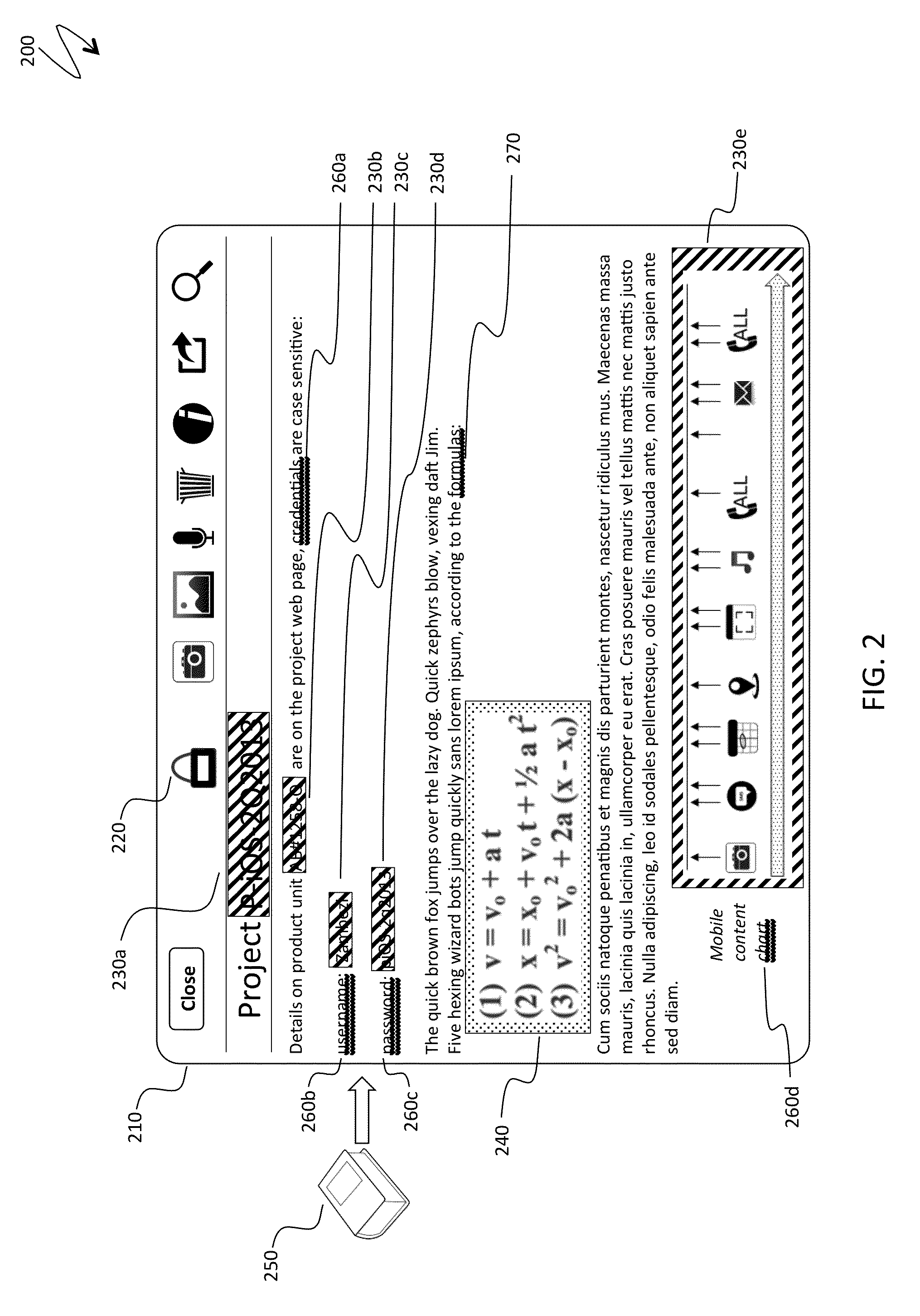Automatic protection of partial document content
a partial document and content technology, applied in the field of information processing and security, can solve the problems of increasing maintenance overhead, limiting the viewing, editing, transmitting and storing of documents, notes and other types of information, and reducing the amount of manual work
- Summary
- Abstract
- Description
- Claims
- Application Information
AI Technical Summary
Benefits of technology
Problems solved by technology
Method used
Image
Examples
Embodiment Construction
[0045]The system described herein provides a new mechanism for an automatic or semi-automatic partial protection of user content, which may include: detecting sensitive content in one or multiple documents, notes and other content units; categorizing content by degree of sensitivity; highlighting sensitive portions of content and offering the sensitive portions for user approval and optional editing; requesting from a user or generating passwords; selecting display formats; encrypting and garbling protected portions of content; and decrypting protected content on request, after successful verification of decryption credentials.
[0046]FIG. 1 is a schematic illustration 100 of an original fully displayed note in a content management system, an input to the system described herein. A mobile device 110 displays a note 120 opened from a thumbnail 130. A user interface of a software application associated with the content management system and maintaining the note includes a general toolba...
PUM
 Login to View More
Login to View More Abstract
Description
Claims
Application Information
 Login to View More
Login to View More - R&D
- Intellectual Property
- Life Sciences
- Materials
- Tech Scout
- Unparalleled Data Quality
- Higher Quality Content
- 60% Fewer Hallucinations
Browse by: Latest US Patents, China's latest patents, Technical Efficacy Thesaurus, Application Domain, Technology Topic, Popular Technical Reports.
© 2025 PatSnap. All rights reserved.Legal|Privacy policy|Modern Slavery Act Transparency Statement|Sitemap|About US| Contact US: help@patsnap.com



